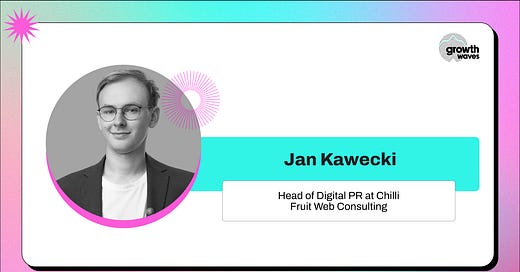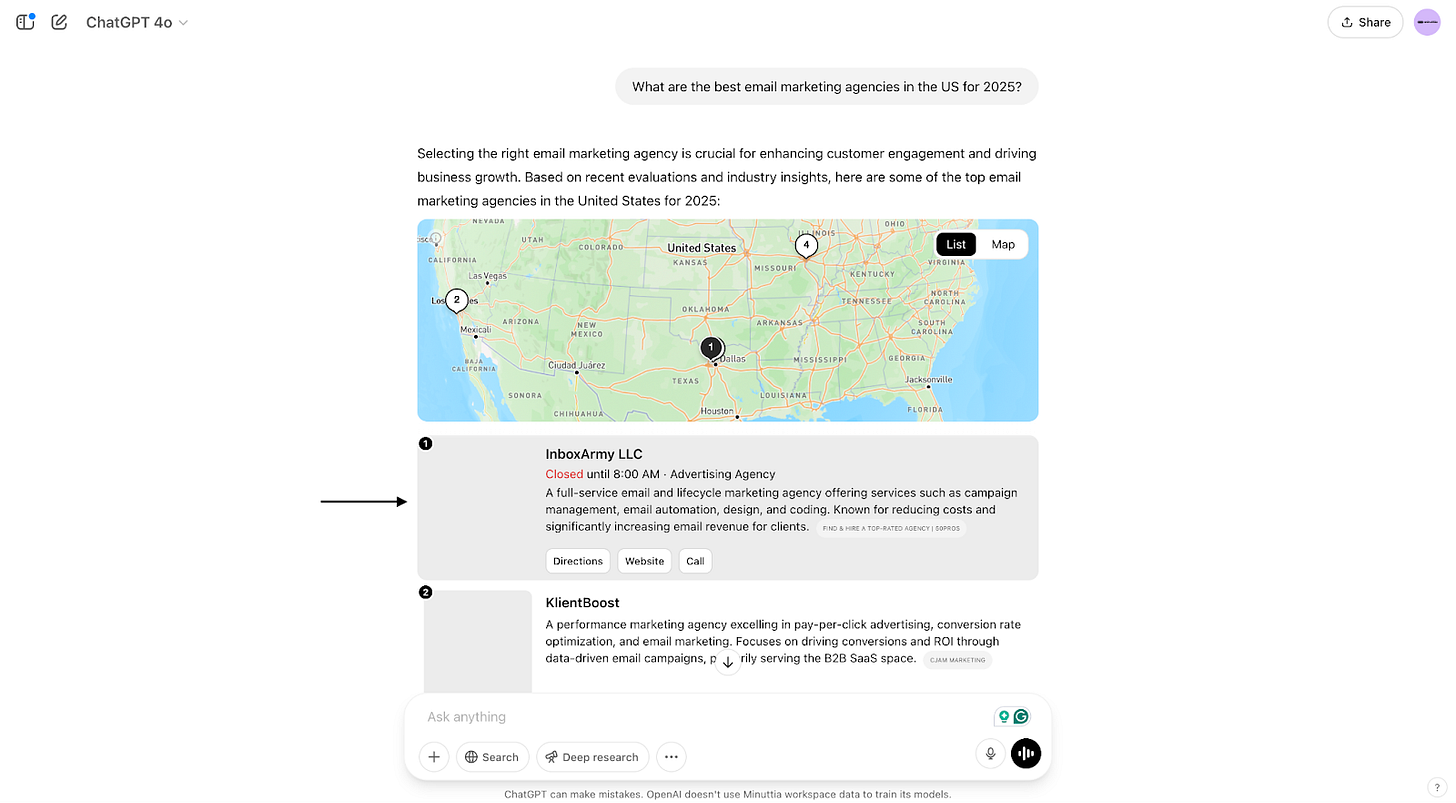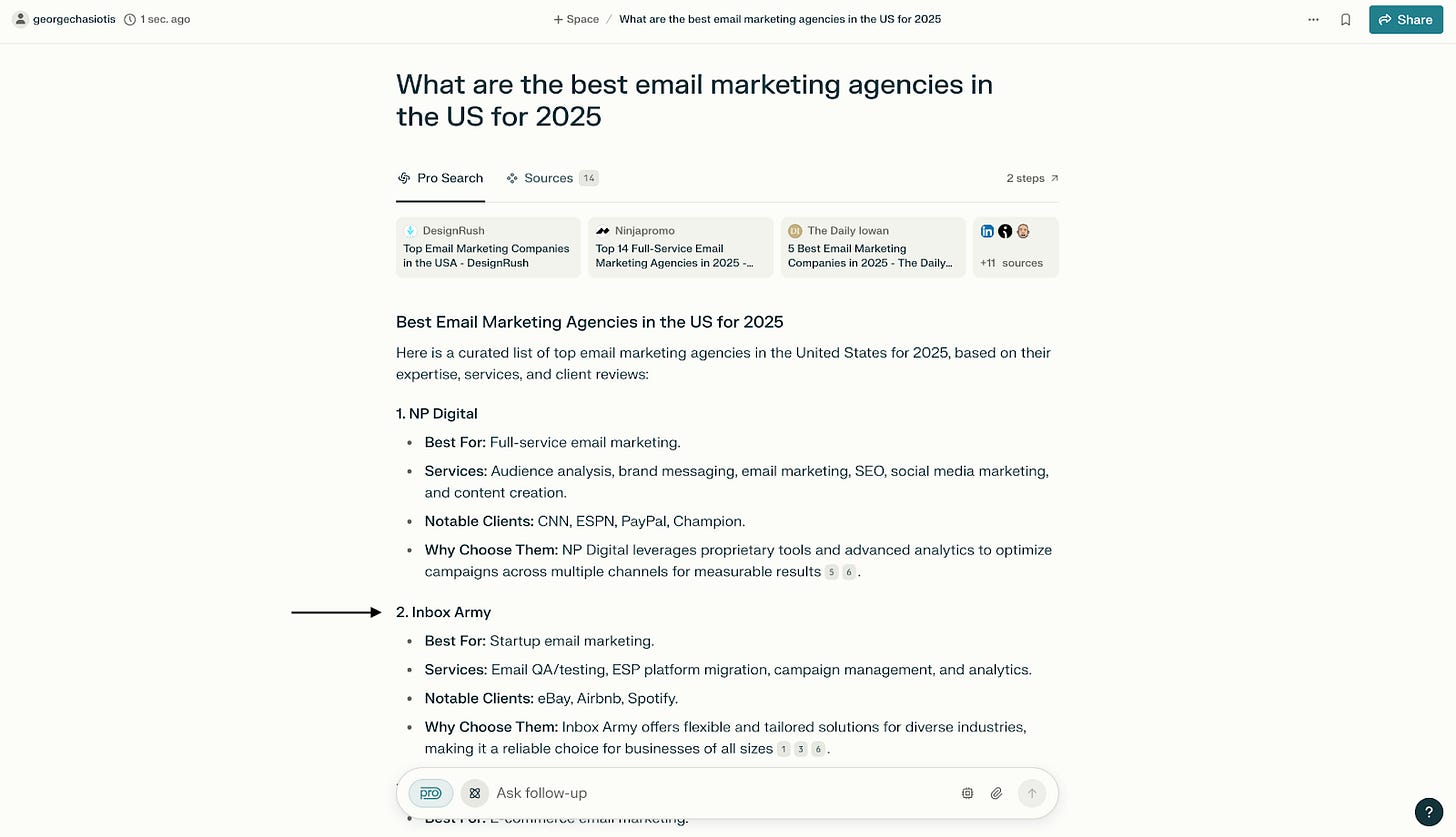How to get visibility on AI search engines
Getting your brand featured in AI overviews, ChatGPT, and Perplexity
👋 Hey, I’m George Chasiotis. Welcome to GrowthWaves, your weekly dose of B2B growth insights—featuring powerful case studies, emerging trends, and unconventional strategies you won’t find anywhere else.
This GrowthWaves note is brought to you by Minuttia.
Content marketing has changed a lot in the past couple of years.
Two main reasons for this:
AI coming into the mainstream, and
The evolution of the search engine landscape.
Most marketers are lost in the Amazon River without a compass in this complicated environment.
And that’s okay because all these changes are too much to handle and keep up with.
Minuttia is a growth-oriented content marketing agency.
Our strategies are channel-agnostic, forward-looking and adapted for the now.
Take a look at our website, and if you’re interested, request a call.
A couple of weeks ago, I had a chat with John Kawecki from Chilli Fruit.
We discussed getting visibility in AI search engines—a topic most digital-first businesses are interested in.
If you like videos, you can watch the interview.
If you prefer text instead, keep reading.
The results
We’ll start backward. First, let’s examine the campaign's results. We’re analyzing Google’s AI Overviews, ChatGPT, and Perplexity search engines.
The brand that John and the team at Chilli Fruit helped is InboxArmy, an email marketing agency. Let’s take a look at the results. Here’s what you get when you search for something like ‘best email marketing agencies 2025’ in Google Search:

Note: My location is set to the US (New York), and I’m using a VPN for this search.
InboxArmy is mentioned in the corroborated answer that’s being served in the AI Overview. It’s not the first brand suggested, but that’s of little importance as it has prominent visibility among the rest of the text.
“They didn’t want to have single articles ranking higher. They wanted their overall presence to be much higher. So we started working on providing them with guest posts, articles, listings which were comparing the other companies from their industry.”
This term (AKA search query) with commercial search intent is highly relevant to InboxArmy's work. Therefore, there’s a high chance that it influences the buyer's journey in some way.
Next, we’re looking at Google Search, this time for a slightly different term. The term is ‘best email marketing agencies us,’ and as you can see, this search returns a ‘From sources across the web’ feature.
Note: I’m using Nightwatch’s search simulator for this search, and my location is again set to the US.
Next, we’re looking at ChatGPT. InboxArmy comes first here, too.
Lastly, we’re looking at Perplixity, using the same question as ChatGPT.
InboxArmy comes second here, right below NP Digital.
So, in total, we’ve examined three different search engines (Google Search, ChatGPT, and Perplexity), and InboxArmy came either first or second.
This is quite impressive, given that email marketing is one of the oldest marketing channels, and you’d expect results to be dominated by legacy players in the space.
So, how did they achieve these results?
The approach
To get there, the team at Chilli Fruit did two things:
Published ‘best email marketing agencies/companies’ listicles in relevant publications;
Got quotes from people from the company featured in prominent publications.
In the screenshot below, we can count 14 URLs from 11 unique domains.
This is part one of the campaign: publishing listicles on relevant publications, like the one below, which was published in The Daily Iowan, a news publication covering the State of Iowa.
“We were placing such articles always putting InboxArmy in the first spot, then different competitors—not necessarily the closest ones. With ten articles published, no company was mentioned more than twice, while InboxArmy was mentioned ten times, in a rather positive sentiment.”
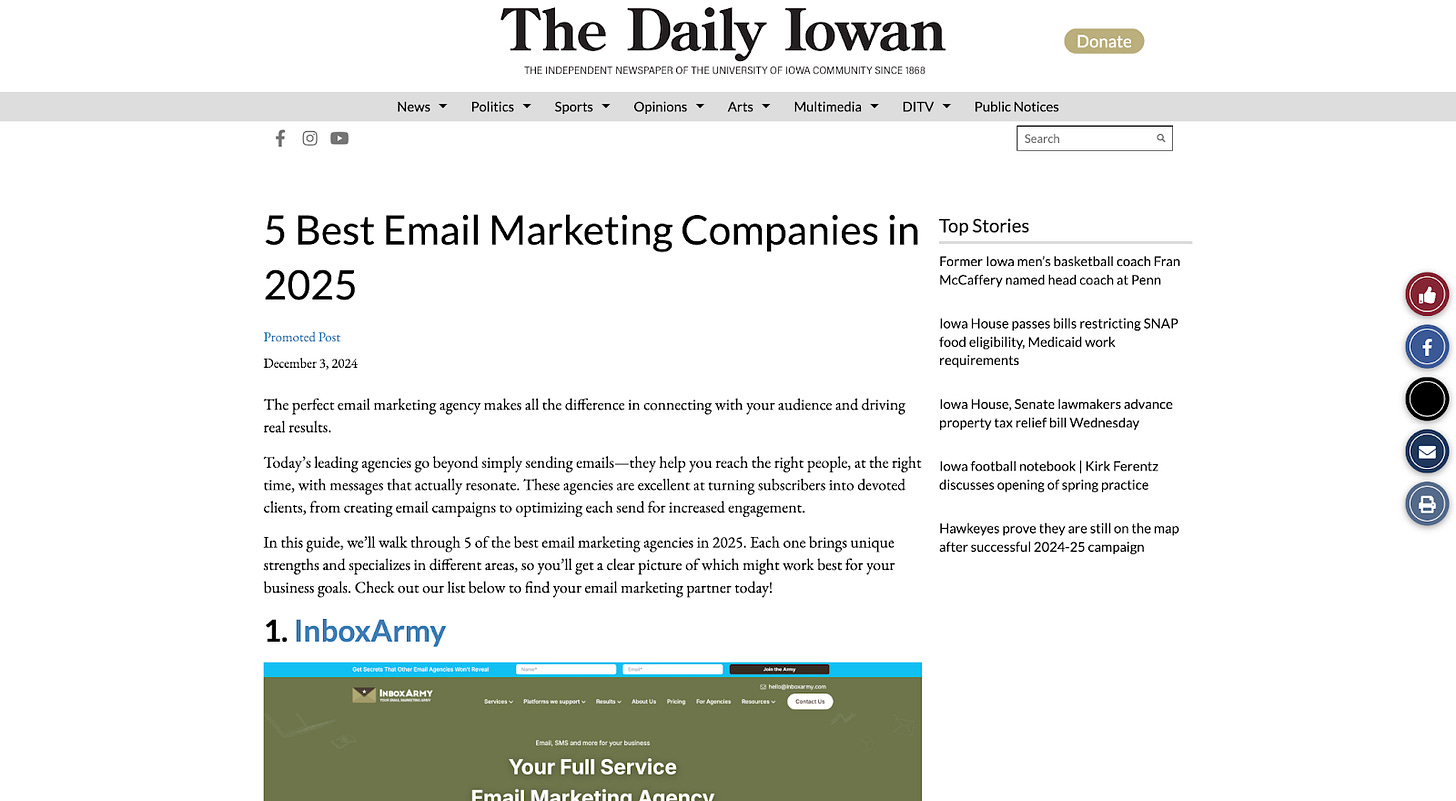
One thing to note here is that even though you are (obviously) biased toward your (or your client’s) products or services, you have to be as objective as possible.
In most cases, you’ll list them first or sometimes second, but that doesn’t mean you have to throw dirt on every other solution in the article. That may cause editorial hurdles and, at the extreme, bring some unnecessary legal headaches you wouldn’t want to deal with.
As I mentioned earlier, the second thing the team at Chilli Fruit did to help their client was to get featured in prominent publications. Here’s an example by Zapier:
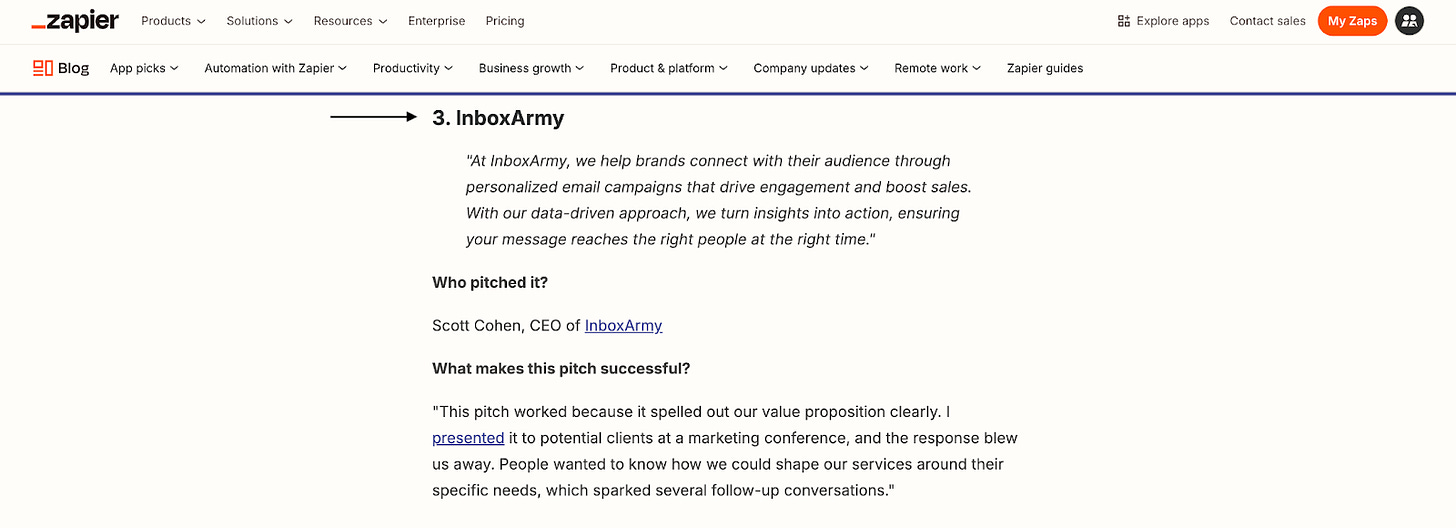
As you can see in the screenshot above, this brand mention includes a quote by InboxArmy’s CEO on a somewhat relevant topic (elevator pitches). In contrast to the first play we saw, the objective was to get brand mentions and be associated with big brands such as Zapier.
It would be great if you could get a link back to your website or other properties, but that’s not the point of this part of the campaign.
My take and key takeaways
One important thing to remember is that the approach we’ve just seen is only correlated to getting visibility to AI search engines.
What I mean is that doing something similar for your brand is not sure to bring you similar results.
Also, this dynamic space is evolving and changing fast, so if you decide to follow this approach, you have to be on top of all the changes happening.
Following this approach increases your chances of getting visibility on AI search engines, but it shouldn’t be treated as the be-all and end-all of AI search engine visibility.
Let’s take a look at the key takeaways from the process we’ve described:
Publishing ‘best {category or JTBD}’ articles on relevant publications has a positive correlation with getting visibility on AI search engines
The articles have to be as unbiased as possible, and you should feature your solution in the top positions (usually 1st or 2nd)
The number of articles you need to achieve good results depends on factors such as the competition
You can run a test campaign with articles being published on ~10 unique domains
Publishing more than once in the same domain is fine as long as you don’t overdo it
These articles have to be published on relevant domains and have visibility in Google Search in the top 25
Adding a digital PR layer on top of the listicles can help accelerate results, especially if you don’t have any visibility
It’s okay for brand mentions to have no hyperlinks pointing back to your website
And with that, let’s close with some final thoughts.
Final thoughts
Getting visibility on AI search engines is a relatively new thing.
You should expect changes and new information on what drives visibility there.
The process we’ve described makes sense: you get featured in different publications as one of the best solutions for x, and you get rewarded for it.
Of course, most of it should come organically, but not all companies benefit from a prominent and well-known brand that gets organic listicle placements and brand features.
Now, even smaller companies have a process they can use to get visibility in these AI search engines.
See you next week!


